| Photo of the month – February 2011 |
[German version] |
Snowmobile
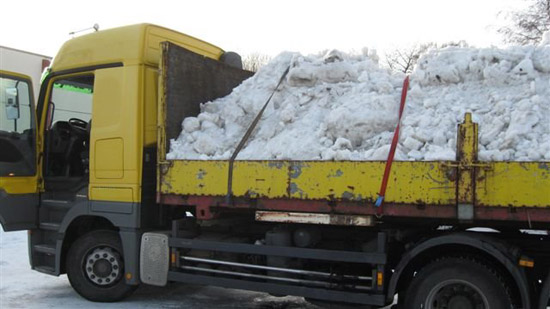
Figure 1 [Ulli Hagedorn]
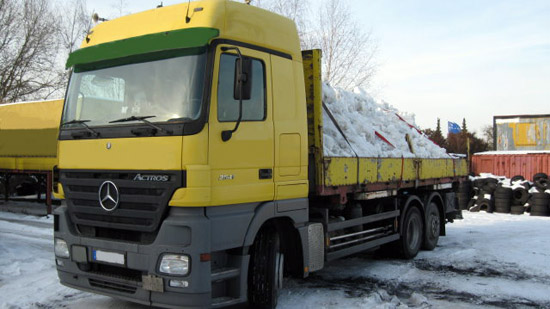
Figure 2 [Ulli Hagedorn]
Looking at the first couple of pictures, our faithful readers may well be inclined to think that one of our fellow creatures wanted to secure snow with tie-down lashings – indeed, they may well already be wondering about the intelligence of the person responsible.
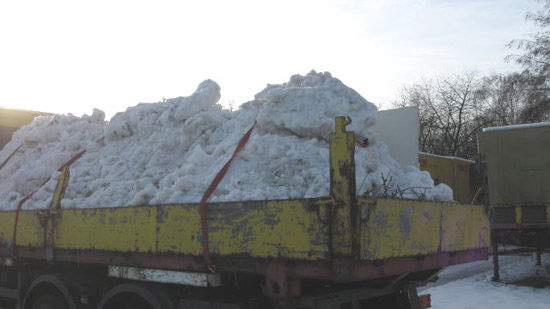
Figure 3 [Ulli Hagedorn]
Far from it!
Even the second photo reveals that there is more to this attempt at load securing that meets the eye in the first photo. And the next two pictures reveal all. The person confronted with the task of loading as much snow as possible onto a clearly unsuitable vehicle at least showed some imagination. Inserting what appear to be sheets of pressboard significantly increased the height of the relatively small right-hand side wall, thus considerably increasing the supposed load capacity of the vehicle.
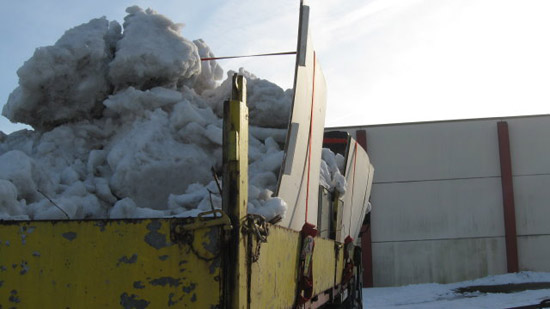
Figure 4 [Ulli Hagedorn]
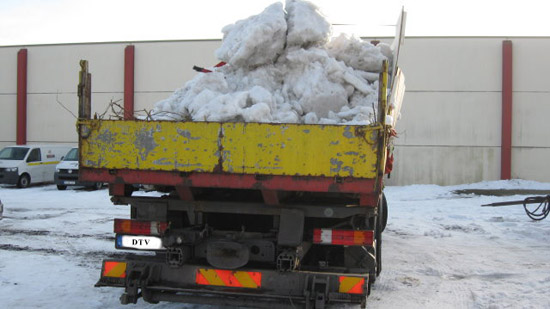
Figure 5 [Ulli Hagedorn]
We do not know why they did not do the same on the left hand side of the vehicle. Perhaps it was because of the bent middle stanchion, or simply because there was simply not enough pressboard to go round. If we have a rational look at this attempt at securing a load, the first thing that strikes us is that the intended purpose of preventing the sheets of pressboard from snapping or bulging out too far beyond the side of the vehicle met with a modicum of success. But as soon as the snow began to yield a little under the belts, even this effect would have disappeared.
But let us assume that the loader had inserted stable sheets on both sides and "secured" them as shown. Would that have secured the load adequately? The answer is a resounding "well, maybe"!
What would the effect of these securing measures be if both sides are connected with a tie-down lashing as shown in the photo?
Let us break down the effect of the tie-down lashing into its component parts:
| A tie-down lashing primarily increases the weight force of the load and hence the friction on the loading surface. Because the belts do not touch the load, and if they did, it would simply slip out from under them, this effect is void. | |
| Which leaves the effect on the boards themselves. They are lashed down, which has no significant impact on securing the load, but the tie-down lashing very effectively counteracts the tendency of the boards to bulge outwards. The belts generate a diagonal, inward force. As the pre-tensioning force increases, this "pulls" the boards together (at the top). The pressure from the load acting on the outer walls or side walls and their extensions (the boards that have been inserted) can cancel itself out as a result of the belts. This would only work if the bulk cargo exerted even pressure on the sides, but we are assuming that for the purposes of our hypothetical calculation. | |
| But if the load accelerated to the side (for instance when cornering), one genuine load securing effect would be lost. The load would rest on the inserted boards on one side and exert a force on these in one direction. Because the opposite side would also move in the same direction, the only remaining securing force would be the extremely small force of friction of the belts on the boards. Taking such a case to its logical conclusion (and ignoring the deformation of the bulk cargo), a sort of direct securing effect would develop after the load had moved a certain distance, and this would actually create a securing effect. Mind you, by this time, the load would be hanging a considerable distance over one side of the vehicle, which is exactly what we wanted to avoid with the boards, and above all with the belts. | |
| If you actually wanted to stabilize a construction of this type with chains or belts, this would only be possible using direct lashings applied crosswise inside the loading area, although from the point of view of loading and unloading, such a use of lashing equipment would make no sense. |
Summary:
An idiosyncratic method of loading, but an interesting thought experiment!
Back to beginning
